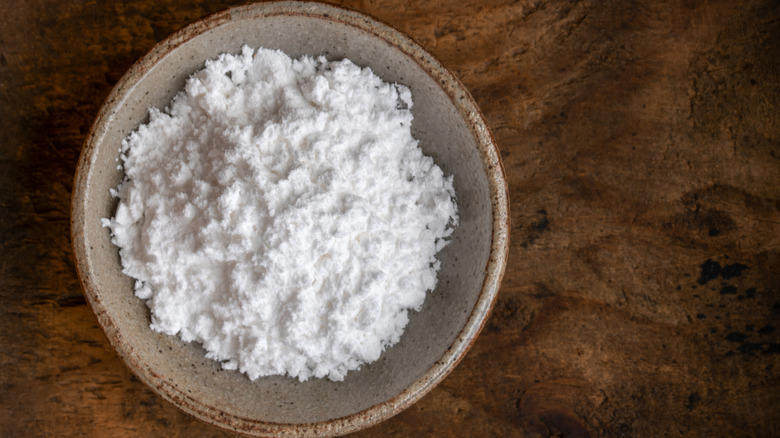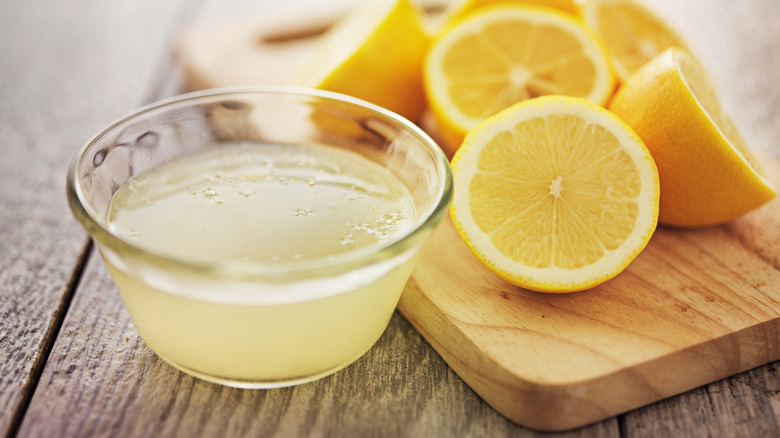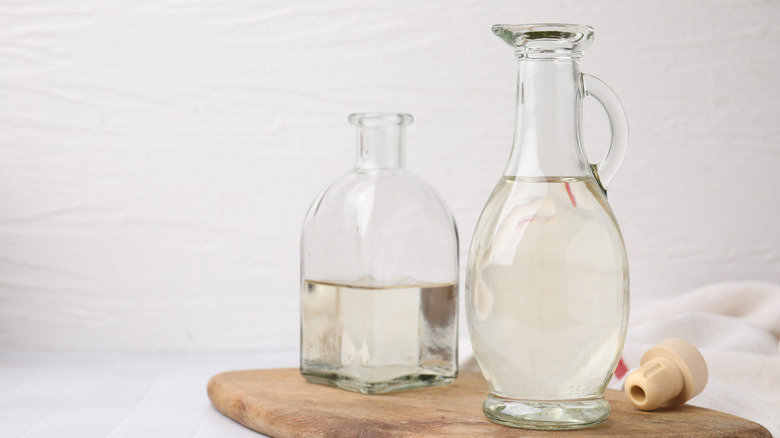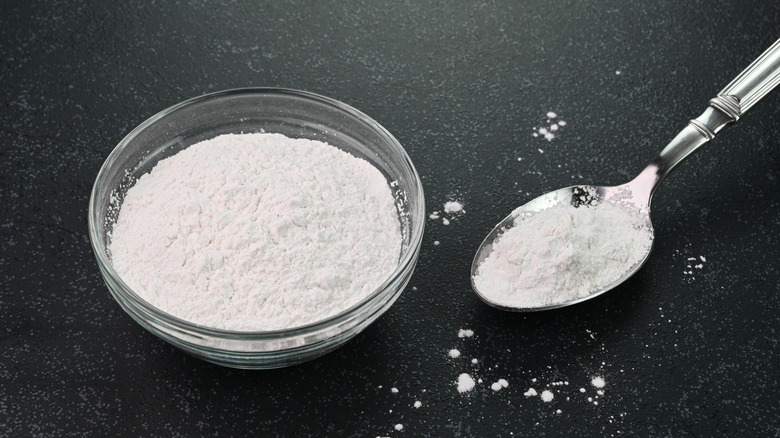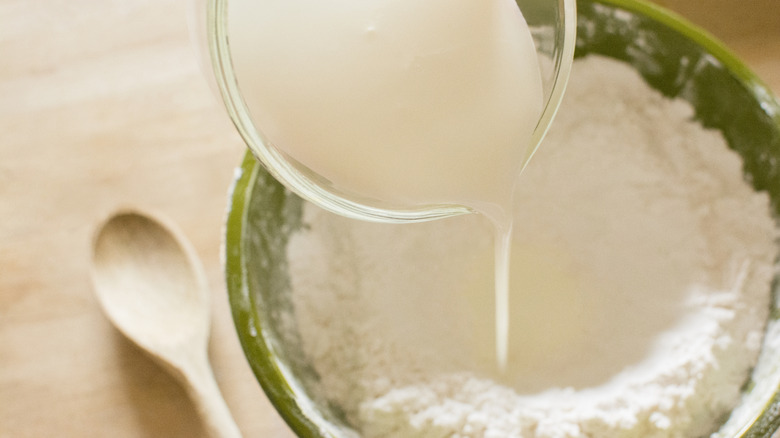5 Simple Substitutes For Cream Of Tartar In A Recipe
Cream of tartar is a bit of a misleading name considering it is not a cream, nor does it have anything to with tartar sauce or the Tatar people. Instead, it is a white, flour-like substance also known as potassium bitartrate, which is a result of winemaking. Cream of tartar is an important ingredient for bakers, as it typically acts as a stabilizer and a leavening agent. For example, cream of tartar is a key ingredient when making the perfect quick bread.
Despite its usefulness, it's not a pantry staple for everyone. Fortunately, there are several cream of tartar alternatives out there that make a very suitable replacement. The best news is that most of these options are so common, you probably already have them in your kitchen.
Lemon juice
If you need something that will recreate the stabilizing or leavening powers of cream of tartar, reach for some fresh lemon juice. Lemon juice's natural acidity mimics the effect of cream of tartar, and it also has a citrusy flavor, making it a good choice if you're baking something that could use a bit of zing.
Depending on whether you're using the ingredient as a leavening agent or to stabilize eggs, you should respectively use twice or four times as much lemon juice as you would cream of tartar. The bright flavor might make lemon juice the best alternative if you want to make an easy angel food cake.
White vinegar
White vinegar's acidity makes it behave similarly to lemon juice as a cream of tartar substitute, which means it is especially good at stabilizing egg white-based dishes like meringues. The drawback of using vinegar is that it can leave behind an unpleasant taste. So, while other types of vinegar would technically work, use white vinegar in your recipes since it has a more neutral flavor. When using white vinegar instead of cream of tartar, follow the same ratios as you would for lemon juice.
Baking powder
Unlike the other entries on this list, baking powder works best as a cream of tartar substitute only if your recipe also contains baking soda. This is because baking powder contains both cream of tartar and baking soda in it, so you can easily adjust ratios and swap out ingredients to make the recipe work.
If you're using baking powder to replace cream of tartar in a recipe, you'll also have to take out any baking soda so you're not doubling up on ingredients. For example, to replace 1 teaspoon of cream of tartar, you should also take out a ½ teaspoon of baking soda. Then, replace everything with 1½ teaspoons of baking powder. Baking powder is especially useful in recipes where cream of tartar acts as a leavening agent, like cakes or cookies.
Buttermilk
Buttermilk also works as an acidic cream of tartar substitute, but since it's a heavy liquid, you'll have to take out other liquid ingredients from your recipe so the baking process isn't completely altered. For instance, if the recipe calls for a ¼ teaspoon of cream of tartar, reduce the liquid in the batter by a ½ cup and add a ½ cup of buttermilk instead. This method takes a bit more effort to get the ratio correct, but the acidity of creamy buttermilk makes it a good cream of tartar substitute in some baked recipes.
Thinned yogurt
Plain yogurt can also replace cream of tartar in recipes that need acidity. Start by adding some milk or water to the yogurt and stir it until it's more viscous. Then, use the same method that you did when substituting with buttermilk: If you need a ¼ teaspoon of cream of tartar, reduce the liquid in your recipe by a ½ cup and add ½ a cup of thinned yogurt. This option can give baked goods a moist texture and tangy flavor — just don't use flavored yogurt unless you want to be really creative with your cooking.
